Varicose veins aren’t just unsightly but could also be a health risk – why do women still ignore them?
They’re ugly and uncomfortable but women tend to dismiss the condition and downplay its symptoms. CNA Women asks medical experts why varicose veins aren’t just an aesthetic issue, and how not seeking help could put one’s health at risk.
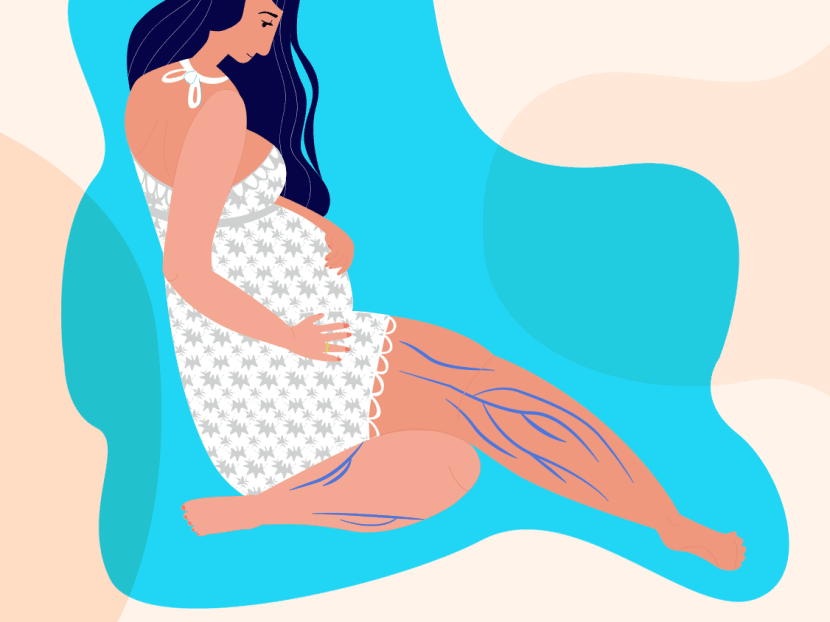
Women are at a higher risk of varicose veins mainly due to the effects of hormonal changes and pregnancy. (Photo: iStock/Victoria Sokolova)
While many women look at varicose veins as an aesthetic or a cosmetic issue, the condition, while common, could potentially be more dangerous than we think.
A 2021 YouGov survey found that more than one in three individuals in Singapore suffer from varicose veins. Out of this number, three-quarters of sufferers said they had not sought, and did not intend to seek, medical help for it, said Associate Professor Chong Tze Tec, Head & Senior Consultant of Vascular Surgery at Singapore General Hospital (SGH).
Varicose veins are a progressive and debilitating condition that may affect your mobility, self confidence and ability to carry out a daily routine, he explained. These green-blue veins that look like ropes running down the skin frequently occur in the leg, resulting in leg cramps, aches and swelling.
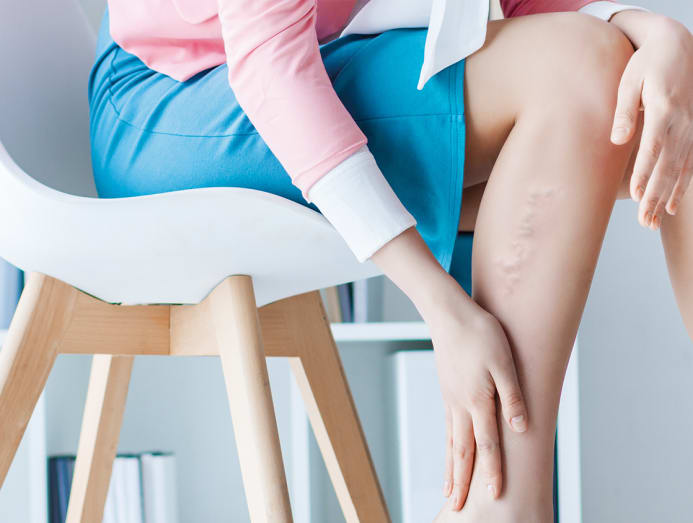
Dr Sriram Narayanan, a senior consultant vascular surgeon at The Harley Street Heart & Vascular Centre, described varicose veins as “abnormal, tortuous veins” that are larger than 3mm in size.
Assoc Prof Chong explained that the condition occurs when the valves (tissue that prevents blood from flowing backwards) in the veins stop working properly, affecting blood circulation.
“Without proper valve function, the blood tends to flow down, giving rise to ‘blood pooling’ in the leg, thus causing the vein to bulge,” said Dr John Tan, a consultant vascular surgeon at The Vein Clinic.
Overall, venous disease has a higher occurrence in places that have a longer life expectancy, such as Singapore, Dr Sriram noted.
“Quite simply, the longer you live, and the longer you stand, the higher the prevalence of venous disease,” he said, adding that about 15 per cent of Singaporeans will develop severe chronic venous disease, which can lead to leg ulcers, swelling or in rare cases, bleeding.
WOMEN ARE AT HIGHER RISK OF GETTING VARICOSE VEINS
Generally, 35 per cent of women above the age of 20 have varicose veins and spider veins, said Dr Tan. The condition occurs less frequently in men, about 20 per cent.
The early signs of varicose veins include common muscle aches, discomfort, and heaviness of the legs.
It’s mainly due to the effects of hormonal changes and pregnancy, Assoc Prof Chong explained. “The oestrogen hormone in women can weaken the walls of the veins and cause valves to function poorly.”
During pregnancy, added Dr Sriram, the baby in the womb puts pressure on the veins that take blood from the legs back to the heart, causing the vein valves to give way, resulting in varicose veins.
IGNORING VARICOSE VEINS AND ITS SYMPTOMS
Since varicose veins progress very slowly – over years and decades – most people often ignore it until it is very advanced, noted Dr Tan.
Women, in particular, tend to downplay the importance of getting treated, said Assoc Prof Chong, adding that these visibly enlarged veins point to something more serious.
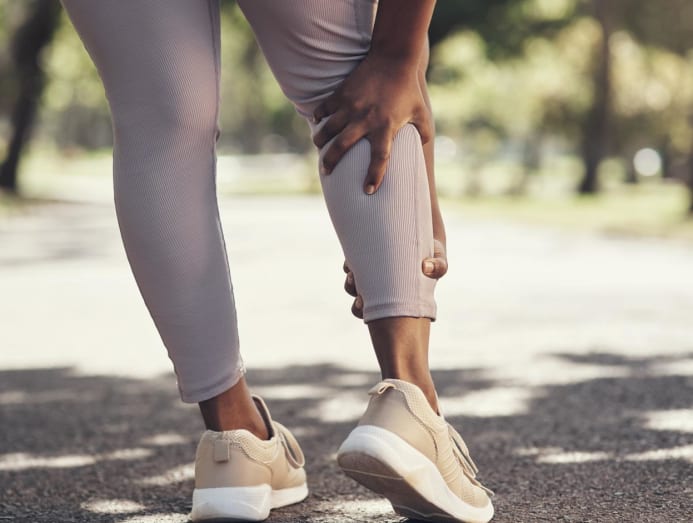
The stoic nature of many women, who bear with the symptoms, may also be a factor in them not seeking treatment, said Dr Sriram. Also, “women who normally cover their legs either as a personal choice or for cultural reasons tend not to seek treatment if they don’t have pain or ache”, he added.
1. WHAT CAUSES VARICOSE VEINS?
In addition to pregnancy and hormonal changes in women, family history and obesity (as excess weight puts pressure on the veins) can increase one’s chances of getting varicose veins, Assoc Prof Chong said, adding that lifestyle choices such as smoking and lack of exercise are common risk factors.
Since it’s related to your lifestyle, your job could increase your risk, too, said Dr Sriram. This is especially so if it requires long hours of standing, such as being a nurse or a teacher.
2. WHAT ARE THE TELLING SYMPTOMS?
Most patients report seeing varicose veins first appear on their legs, especially at their calves.
“The early signs of varicose veins include common muscle aches, discomfort, and heaviness of the legs. In more severe cases, symptoms can also include swelling, burning, itching, and even skin discolouration,” said Assoc Prof Chong.
Dr Sriram said that having a “sensation of aching” and “cramping in the legs”, which worsens at the end of the day, is also common. Some women also experience pain or throbbing in the varicose veins itself, especially around the time of their menstrual period, he added.
3. ARE VARICOSE VEINS THE SAME AS SPIDER VEINS? WHICH IS MORE SERIOUS?
Spider veins, also known as thread veins, are fine red lines often seen in fairer skin, Dr Sriram explained. They’re also smaller than varicose veins – less than 1mm in size.
“They appear as clusters of pink and purple thread-like veins that lie near the surface of the skin, typically on the legs,” explained Dr Tan.
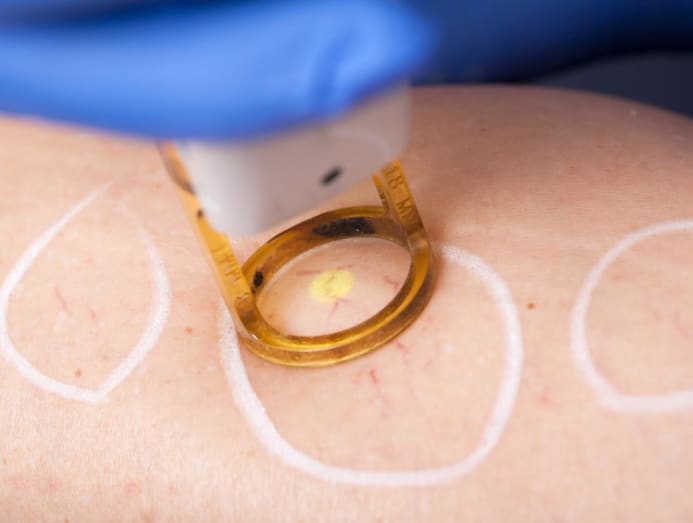
While some may see spider veins as unsightly, Assoc Prof Chong told CNA Women that they are “much more common” and are less likely to cause harm to one’s health. In fact, up to 80 per cent of people in Singapore have spider veins, he added, and sufferers may not need treatment.
4. CAN WE LEAVE VARICOSE VEINS UNTREATED?
Unlike spider veins, which can often be left alone, varicose veins should be treated, said Dr Tan. They will not go away on their own.
Varicose veins can initially be asymptomatic, but as the condition progresses, you can expect significant discomfort in the form of aches, cramps and swollen ankles, said Dr Tan.
Women who normally cover their legs either as a personal choice or for cultural reasons tend not to seek treatment if they don’t have pain or ache.
However, as varicose veins “progress slowly”, he added that you can slow its progression by wearing compression stockings and elevating your leg to relieve symptoms.
When should you seek medical attention and treatment? When the symptoms start to disrupt your ability to go about your daily routine, advised Assoc Prof Chong, or when you get to the stage of visibly enlarged veins.
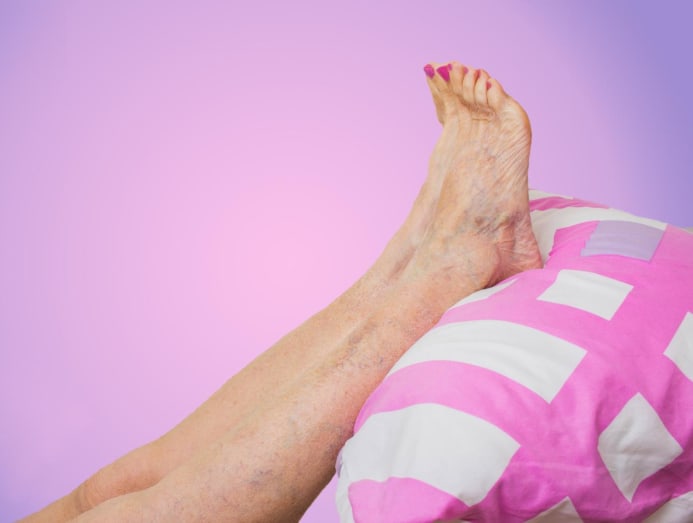
“Going about your daily routine might only exacerbate the condition and may lead to venous bleeding (which occurs when build-up pressure can eventually lead to the rupturing of the affected veins),” he said.
Persistent leg cramps and muscle aches are also not a good sign, Assoc Prof Chong added, and you should get your legs checked as soon as possible, before the symptoms worsen.
6. HOW SERIOUS (OR DANGEROUS) CAN VARICOSE VEINS GET?
According to Assoc Prof Chong, a study suggested that 30 per cent of untreated patients will have more serious problems within six years, which include vein rupturing and heavy bleeding.
Signs of severe varicose veins include:
- The development of new onset swelling in the leg or ankle, or a painful calf, said Dr Sriram
- Sudden pain and redness over a segment of vein, which can be a dangerous sign, warned Dr Sriram. “This signifies an acute inflammation and clot (or thrombosis) of the vein – and the clot can travel to the heart and lung.”
- Pigmentation and spider veins around the ankle, said Dr Tan. “It may mean that your varicose veins are fairly advanced and there is a significant risk that it may develop into leg ulcers.”
7. WHAT ARE THE TYPES OF TREATMENTS AVAILABLE FOR VARICOSE VEINS?
The aim of treatment is to remove the veins with bad valves and push the blood into the good veins with well-functioning valves, said Dr Sriram.
Treatment used to involve surgery with full anaesthesia and “ugly incisions” to remove or tie up the damaged veins, said Dr Tan. But nowadays, these have been replaced with minimally invasive therapies to seal the affected vein.
For example, in the venaseal closure procedure, a “medical glue” is used to seal the vein, said Dr Tan. During this procedure, a small catheter is introduced into the vein under ultrasound guidance, through which small drops of the glue are inserted every few centimetres, he explained. Pressure is then applied at each vein spot for the glue to act.
Other minimally invasive treatments include using radiofrequency ablation (which uses heat to seal up the vein); and endovenous laser ablation (which uses significantly higher temperatures at the tip of a laser fibre to close the vein), said Dr Sriram.
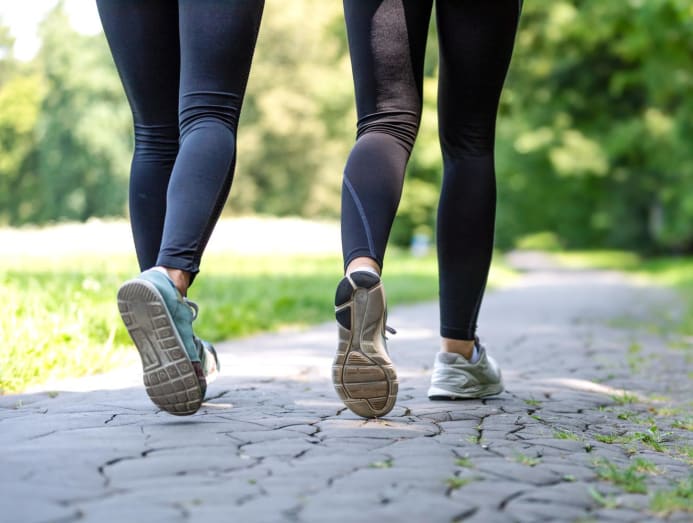
Recovery time for these minimally invasive therapies is “significantly reduced”, said Assoc Prof Chong, with most treatments being done as outpatient procedures.
For instance, in endovenous laser ablation, varicose veins can be closed and eliminated in about one hour, said Dr Tan, leaving just a “few, small needle marks”, without scars.
In 15 to 30 per cent of cases, varicose veins can recur, usually within five years, said Dr Sriram.
To reduce the likelihood of recurrence, he advised developing the habit of walking (not running) to keep your weight down. “This activates the calf muscles to pump blood back to the heart from the veins.”
“If the varicose veins come back in the same spot, it’s usually (though not always) due to incomplete treatment the first time.”
CNA Women is a section on CNA Lifestyle that seeks to inform, empower and inspire the modern woman. If you have women-related news, issues and ideas to share with us, email CNAWomen [at] mediacorp.com.sg.








